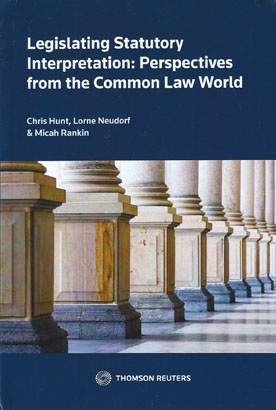
Legislating Statutory Interpretation: Perspectives from the Common Law World is a collection of essays focusing on the relationship between interpretation acts and statutory interpretation.
The activity of interpreting statutes is often thought to be quintessentially judicial and is largely governed by common law rules and principles of statutory interpretation. Interestingly, however, in every province in Canada (and in many other jurisdictions), parliaments and legislatures have enacted statutes that purport to dictate to courts how they should interpret legislation.
For instance, section 8 of the British Columbia Interpretation Act states that “Every enactment must be construed as being remedial, and must be given such fair, large and liberal construction and interpretation as best ensures the attainment of its objects.”
What is the significance of these attempts by legislatures to direct courts to adopt a particular interpretive method, and one that is, moreover, essentially teleological in its orientation? From the standpoint of legal and constitutional theory, this incursion by parliament into this sacrosanct realm of the judiciary seems deeply problematic.
Yet the truth of the matter is that courts have largely ignored these interpretation acts and applied a common-law interpretive methodology. With the help of leading legal scholars drawn from all over the Commonwealth, this text explores the relationship between courts and legislatures in establishing methodologies for statutory interpretation. Is this relationship constitutionally permissible? And if so, is it desirable? This collection of essays will explore these questions.